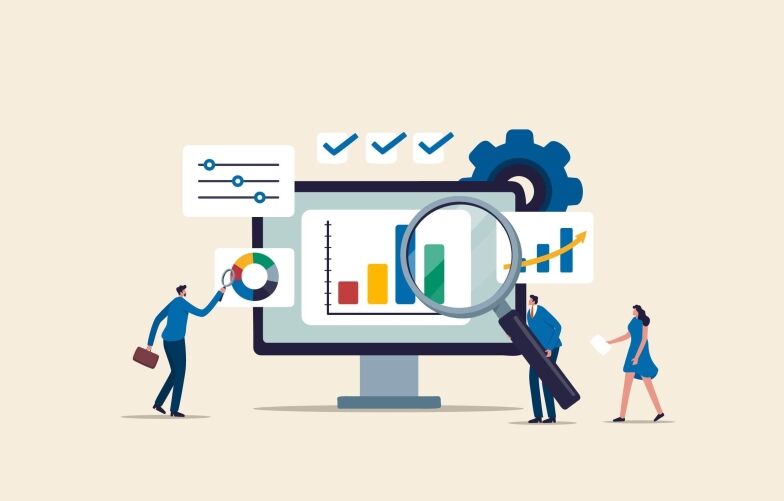Every decision-maker who works in manufacturing is no stranger to data. From day-to-day, data in one form or another informs most of the decisions you make and actions you take. And if your organization has done well without business analytics tools, you may question the value of yet another IT capability.
The problem is that even with effective spreadsheet-based tracking and analysis of operations, you are spending time that could be better spent on other tasks while no doubt missing issues and opportunities hidden in the data. And if your operations are especially complex, that means you’re leaving a lot of money on the table.
But how do you know when it’s time to use analytics and how will it impact day-to-day processes? Before we delve into these questions, let’s take a moment to understand what analytics is and then what to consider for a successful transition.
More Than Pretty Pictures
If you ask five different people at a party to explain what data analytics is, you’ll get five different answers. A lot of people think that data analytics is simply about visualizations of data. But the reality is far more nuanced. There are several types of analytics capabilities, including:
- Descriptive—Enables you to evaluate data from across systems and operations to answer, “What has happened?”
- Diagnostic—Enables you to look back at data to answer, “Why did xyz happen?”
- Predictive—Relies on statistical models to answer, “What could happen?”
- Prescriptive—Explores how to optimize business outcomes by enabling you to ask, “What should we do?”
In other words, rather than providing a simple visualization of data from a spreadsheet or system, analytics tools can create far deeper and broader business insights using data from across different systems. And the insights from analytics can dramatically impact tactical and strategic operational decision-making for the better.
For example, a manufacturer with an extensive product catalog was relying on Excel to evaluate things like customer preference trends, and which products were most likely to sell and why. With Excel, different people were getting significantly different answers. After integrating its systems and using analytics, the company found the ability to make better decisions about everything from stock levels to promotions and improved its profit margins across its product lines. It also saves multiple team members days or weeks’ worth of time each month on reporting.
From a bigger-picture perspective, analytics can also help with complex challenges, such as comparing manufacturing plants to understand why one is outperforming others.
3 Signs Your Business Could Benefit from Analytics Capabilities
If you’ve been struggling with whether or not it’s time for analytics in your organization, here are a few indicators that you should look into a solution sooner rather than later:
- Difficulty finding root causes of problems. If you’re dealing with dozens or hundreds of metrics and can’t get to the root cause of issues, such as why you’re having safety problems, or why quality varies from day to day, analytics capabilities will help you find relationships in data that may not be visible.
- Time-draining weekly or monthly reporting processes. If people are spending significant portions of time compiling and analyzing data in spreadsheets or other systems, data integration combined with analytics tools will not only free up time, but also lead to more valuable business insights.
- Delayed decision-making. If you have to wait days, weeks or even a month to get data and insights you need to keep operations on track, data integration and analytics can help by enabling real-time insights and faster decisions.
The Key to a Successful Transition
Although analytics tools provide powerful capabilities for making more informed and smarter operational decisions, the transition to using them effectively will take some time. After all, even when a solution is easy to use, there are process and mindset shifts that will need to take place to become a data-driven organization. Depending on roles and job functions, people will need to see different things, and part of the challenge is giving different groups of people access to what they need and getting rid of what’s irrelevant.
One of the best ways to ensure success with analytics, in the long run, is to start with “easy win” projects that will provide a good foundation for establishing and working through kinks in new processes. It could be something as simple as cross-referencing training records in an HR database with product quality data from shifts. One manufacturer did this and determined that they should be more thoughtful about scheduling highly trained people with lesser trained people to improve the overall quality of products. Or a brick manufacturer could look at current and previous production runs to explore how environmental conditions around their facility, including temperature and humidity, impact quality and adjust controls accordingly. The important thing is that people become comfortable with the tool and how to use it effectively and that there is frequent communication among stakeholders and users about what’s working and what’s not.
Remember: Knowing About a Problem Is One Thing. Seeing That There Is a Resolution Is Another.
When it comes to choosing an analytics solution, it’s easy to lose sight of the fact that insights only matter if you do something with them. And the problem is that most dashboards lack capabilities for helping you develop action plans and then following through on them. Dploy Solutions is the only business process management software that includes analytics along with features that help ensure you fix the problems you find by enabling you to:
- Choose specific reason codes
- Determine countermeasures and assign action items to people
- Track progress
- Retain problem and resolution data for future reference
Think your daily operations could benefit from analytics and Dploy’s unique countermeasure features? Contact us today.


